59th Medical Wing
| 59th Medical Wing | |
|---|---|
|
Emblem of the 59th Medical Wing | |
| Active | Aug. 21, 1941 – present |
| Country |
|
| Branch |
|
| Type | Wing |
| Role | Military Medical |
| Size | 8,000 personnel |
| Part of | Air Education and Training Command |
| Garrison/HQ | JBSA-Lackland, Texas |
| Engagements |
World War II (American Theater) |
| Decorations |
|
| Commanders | |
| Current commander | Maj. Gen. (Dr.) Bart O. Iddins |
The 59th Medical Wing (MDW) is the U.S. Air Force’s largest medical wing and is the Air Force functional medical command for Joint Base San Antonio (JBSA). It comprises seven medical groups across San Antonio. Three are located at the Wilford Hall Ambulatory Surgical Center (WHASC); the 959th Medical Group is located at San Antonio Military Medical Center (SAMMC), JBSA-Fort Sam Houston; the 59th Training Group - the wing's newest group, activated on Jan. 4, 2016, is also located at JBSA-Fort Sam Houston. The 359th and 559th Medical Groups are located at and support the missions of JBSA-Randolph and JBSA-Lackland, respectively.[2]
The 59th MDW operates with a $271 million budget, and a staff of 8,000 military, civilian, and contract personnel. The 59th MDW is home to the Critical Care Air Transport Team Pilot Unit (CCATT), which has executive management over 118 active-duty, Guard and Reserve teams. The wing also has the Defense Department’s largest Blood Donor Center, a Warfighter Refractive Surgery Center, and Extracorporeal Life Support (ECLS) capability. The ECLS offers the only global transport option in the world, providing partial heart-lung bypass to eligible adults, infants, and children suffering from severe cardiopulmonary failure. The medical wing also has the largest dental facility in the DOD and the only dental group in the Air Force. The 59th Dental Group examines approximately 36,000 basic military trainees and 28,000 technical training students a year. It has the only stereolithography and modeling lab in the Air Force, which produces dimensionally accurate medical models and craniofacial prostetheses. This capability provides rehabilitative support to patients with acquired or congenital defects of the head and neck region.[3]
Healthcare
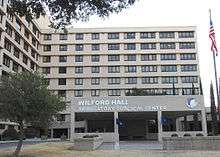
The 59th MDW provides medical care at various facilities in San Antonio. Wilford Hall Ambulatory Surgical Center is the Air Force’s largest outpatient facility, providing a full range of primary care, specialty care, and outpatient surgery. At SAMMC, the DOD’s largest inpatient medical facility, nearly 2,000 59th MDW personnel work with Army medics in areas such as the bone marrow transplant center, the burn unit, and other rare and complex treatment environments. The wing’s highly specialized trauma surgeons, along with their Army counterparts, staff the Defense Department’s only Joint Level 1 Trauma Center in the United States.[4]
Readiness
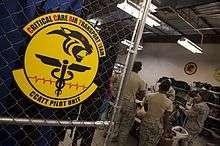
Most of the wing’s military personnel are assigned to one of several teams, which act as building blocks to form Expeditionary Medical Support hospitals and a number of specialized units, to include Critical Care Air Transport Teams. The wing has the largest medical mobility commitment in the U.S. Air Force and maintains approximately 2,950 mobility positions. At any one time, there are about 200 medics deployed worldwide, executing a joint U.S. mission in support of global operations. Additionally, the 59th Medical Wing oversees deployments for all Air Force medical assets assigned within JBSA. Outreach teams are regularly dispatched all over the globe to respond to emergencies, assist in Department of Defense contingency missions, and reinforce readiness training through real-world civil and humanitarian assistance missions.[5]
Education
The wing’s postgraduate medical education function is merged with that of Brooke Army Medical Center under the San Antonio Uniformed Services Health Education Consortium (SAUSHEC). The two facilities, in close cooperation with the University of Texas Health Science Center at San Antonio (UTHSCSA), provide a wide array of training programs ranging from general surgery to emergency medical services administration. At any given time, SAUSHEC has roughly 600 residents enrolled in 37 graduate medical education (GME) programs, of which 60 percent are Air Force. There are an additional 22 programs for our Allied Health members, including: Psychology Internship; Health Psychology Fellow; Dietetic; Pharmacy Clinical; Pastoral Education; General Surgery Physician Assistant (PA); Emergency Medicine PA; Otolaryngology PA and Audiology.[6]
The wing’s training group supports military medical service and medical readiness training at the Medical Education and Training Campus on JBSA-Fort Sam Houston for 12,100 students annually, and at two operating locations, one detachment and 17 sites around the world. The 59th Training Group’s partnership with METC affords training for the five uniformed services and international students. The group awards 24 Air Force specialty codes and 93,037 Community College of the Air Force credit hours annually while maintaining 14 national accreditations.
Training

In addition to the GME program, the 59th MDW is the largest of 15 clinical training sites in the Air Force, graduating an average of 500 officer and enlisted students in various dental and allied health programs each year. Additional training includes the Sustainment Training to Advance Readiness Skills (STARS) program, refresher trauma training and courses for specialized surgical and critical care teams. The 59th MDW has the largest DOD dental education mission, providing 85 percent of the Air Force’s total dental training capacity.[7]
Research
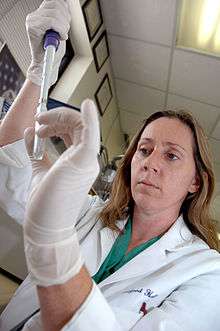
The Clinical Research Division is the Air Force Medical vice’s largest and most productive research facility, with more than 500 active research protocols. The primary focus of the wing’s research program is to meet the needs of the Air Force through the development and performance of medical readiness training for expeditionary forces, such as pararescuemen and the Critical Care Air Transport Unit. The majority of research and training protocols directly contribute to the wing’s mission by supporting Graduate Medical and Graduate Dental Program requirements, sustaining medical readiness, and building healthy communities. Important research initiatives include traumatic brain injury treatment, wartime vascular injury management, diabetes management, combat casualty care, and critical care in aeromedical evacuation.[8]
Collaboration
As members of a strong inter-service team, the 59th Medical Wing is also dedicated to building partnerships with community organizations such as the Veterans Affairs Audie Murphy Hospital, University of Texas Health Science Center, Humana Military Healthcare Services, University Health System, and the Mayor’s Fitness Council. The 59th Medical Wing is committed to providing the best possible care to all active-duty members, dependents and retirees while working closely with the local community.[9]
Subordinate units
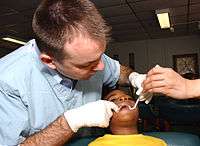
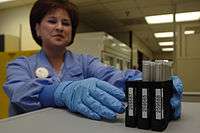

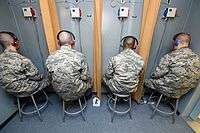

59th Dental Group
- 59th Dental Squadron
- 59th Dental Support Squadron
- 59th Dental Training Squadron
59th Medical Operations Group
- 59th Medical Support Squadron
- 59th Medical Operations Squadron
- 59th Surgical Operations Squadron
- 59th Mental Health Squadron
- 59th Radiology Squadron
- 59th Surgical Specialty Squadron
- 59th Diagnostics and Therapeutics Squadron
- 59th Laboratory Squadron
- 59th Pharmacy Squadron
59th Medical Support Group
- 59th Medical Support Squadron
- 59th Medical Logistics and Readiness Squadron
359th Medical Group (former 12th) at JBSA-Randolph
- 359th Aerospace Medicine Squadron
- 359th Dental Squadron
- 359th Medical Operations Squadron
- 359th Medical Support Squadron
559th Medical Group (former 37th) at JBSA-Lackland
- 559th Aerospace Medicine Squadron
- 559th Medical Operations Squadron
959th Medical Group (former 59th Inpatient Operations Group) at JBSA-Fort Sam Houston
- 959th Medical Operations Squadron
- 959th Inpatient Operations Squadron
- 959th Clinical Support Squadron
59th Training Group
- 381st Training Squadron
- 382nd Training Squadron
- 383rd Training Squadron
- 59th Training Support Squadron
Clinical Departments
|
|
Non-Clinical Departments
- Family Advocacy
- Health and Wellness Center (HAWK)
- Joint Commission on Accreditation of Healthcare Organizations (JCAHO)
- Team HELP
- Trainee Health
History
World War II

The 59th Observation Group was established at Newark Airport, New Jersey, in 1941. It moved to Fort Dix Army Air Base, New Jersey, later in the year. Following the US entry into World War II the Group engaged in antisubmarine patrols along the East coast of the United States from December 1941 – October 1943. Initially during 1941–42 the Group operated a wide range of aircraft, including the BC-1A, L-59, O-46, O-47, O-49 Vigilant, and O-52 Owl During 1943 and 1944 the group trained pilots using P-39 Airacobra aircraft and later, in 1944, the Curtiss P-40 Warhawk as well. The unit was redesignated the 59th Reconnaissance Group on 2 April 1943, and again as the 59th Fighter Group on 11 August 1943. The 59th was disbanded on 1 May 1944. On 31 July 1985, the unit was redesignated the 59th Tactical Fighter Wing, but remained inactive. Finally, it was reactivated and consolidated with the Wilford Hall U.S. Air Force Hospital on 1 July 1993.
Lackland Air Force Base medical unit
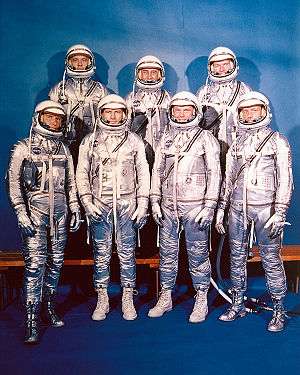
During the Korean War, the 3700th Medical Squadron developed a program to train basic trainees as medical corpsmen to ease shortage of medical personnel. Wilford Hall Medical Center as most people know it today came about during this time. With many Soldiers, Sailors, Airmen and Marines returning from the conflict needing medical attention, plans were drawn up to construct a new and larger medical facility which opened in 1957. It was in this first facility, most of which remains today, that the hospital participated in the first of what would become a long list of highlights of medicine, providing medical support to NASA’s project Mercury.
From 1983, Wilford Hall offered centralized outpatient care, a clinical investigation facility, the Air Force's largest dispensary system, and the only eye bank and organ transplant centers. The hospital accomplished important research work in neonatal medicine, surgical transplants, orthopedic surgery, rheumatology, immunology, and maxillofacial surgery. Clinical investigations research kept the wing at the forefront of development of high-frequency ventilation and extra-corporeal membrane oxygenation; new techniques for the care of premature infants; improved cancer treatments; bone banking and transplantation; laser photocoagulation; and acquired immune deficiency syndrome (AIDS). In December 1989, it provided medical support to casualties returning from operations in Panama. From 4 January to 21 March 1991 Wilford Hall deployed over 900 personnel to RAF Little Rissington, England, to establish a 1500-bed hospital in support of expected casualties from the Gulf War. In 1993 the Medical Center was redesignated the 59th Medical Wing, taking the lineage of the never-active 59th Tactical Fighter Wing.
Closure and realignment

On September 15, 2011, the Wilford Hall Medical Center was officially renamed to the Wilford Hall Ambulatory Surgical Center, becoming the largest outpatient surgical center in the Air Force. Inpatient services are no longer provided at JBSA-Lackland, formerly Lackland Air Force Base, but are centralized at nearby San Antonio Military Medical Center – formerly known as Brooke Army Medical Center, or BAMC, at JBSA-Fort Sam Houston, Texas. Both facilities and all other military treatment facilities in the San Antonio area fall under the San Antonio Military Healthcare System (SAMHS). The current building is projected for demolition in 2016. Construction is underway on a new 680,000 square-foot facility, which will be located adjacent to the existing building. [10]
Lineage
59th Tactical Fighter Wing
- Constituted as the 59 Observation Group on 21 August 1941
- Activated on 1 September 1941
- Inactivated on 18 October 1942
- Activated on 1 March 1943
- Redesignated as 59 Reconnaissance Group on 2 April 1943
- Redesignated as 59 Fighter Group on 11 August 1943
- Disbanded on 1 May 1944
- Redesignated 59 Tactical Fighter Wing on 31 July 1985
- Consolidated with Wilford Hall USAF Medical Center on 1 July 1993
59th Medical Wing
- Designated as the 3700 Medical Squadron on 25 August 1948
- Organized on 26 August 1948
- Redesignated 3700 Station Medical Squadron on 1 November 1948
- Redesignated 3700 Medical Group on 27 June 1950
- Redesignated 3700 USAF Hospital on 16 October 1953
- Redesignated USAF Hospital, Lackland on 1 July 1958
- Redesignated Wilford Hall USAF Hospital on 2 March 1963
- Redesignated Wilford Hall USAF Medical Center on 1 July 1969
- Consolidated with the 59th Tactical Fighter Wing as 59th Medical Wing on 1 July 1993
Assignments
|
|
Components
- 9th Observation Squadron (later 9 Reconnaissance Squadron, 488 Fighter Squadron): 29 March 1942 - 18 October 1942; 1 March 1943 – 1 May 1944
- 103d Observation Squadron: 1 September 1941 – 18 October 1942
- 104th Observation Squadron (later 104th Reconnaissance Squadron, 489th Fighter Squadron): 1 September 1941 – 18 October 1942; 1 March 1943 – 1 May 1944
- 119th Observation Squadron (later 119th Reconnaissance Squadron, 490th Fighter Squadron): attached December 1941; assigned 1 March 1943 – 1 May 1944
- 126th Observation Squadron(later, 126th Reconnaissance Squadron; 34th Photographic Reconnaissance Squadron): 1 September 1941 – 18 October 1942; 1 March – 11 August 1943.
- 447th Fighter Squadron: 20 November 1943 – 1 May 1944.
Stations
- Newark Airport, New Jersey, 1 September 1941
- Fort Dix Army Air Base, New Jersey, 14 November 1941 – 18 October 1942
- Fort Myers Army Air Field, Florida, 1 March 1943
- Thomasville Army Air Field, Georgia, c. 30 March 1943 – 1 May 1944
- Joint Base San Antonio-Lackland, Texas, 26 August 1948 – present
Aircraft
|
|
References
- ↑ 59 Medical Wing (AETC) Fact Sheet
- ↑ 59th Medical Wing Public Affairs, 2014
- ↑ 59th Medical Wing Public Affairs, 2014
- ↑ 59th Medical Wing Public Affairs, 2014
- ↑ 59th Medical Wing Public Affairs, 2014
- ↑ 59th Medical Wing Public Affairs..., 2014
- ↑ 59th Medical Wing Public Affairs, 2014
- ↑ 59th Medical Wing Public Affairs, 2014
- ↑ 59th Medical Wing Public Affairs, 2014
- ↑ 59th Medical Wing Public Affairs
![]() This article incorporates public domain material from the Air Force Historical Research Agency website http://www.afhra.af.mil/.
This article incorporates public domain material from the Air Force Historical Research Agency website http://www.afhra.af.mil/.
- Maurer Maurer (1983), Air Force Combat Units Of World War II, Office of Air Force History. ISBN 978-0-405-12194-4
- 59th Medical Wing Lineage Fact Sheet
- 59th Medical Wing Fact Sheet
- Wilford Hall the Man
- 59th Medical Wing Public Affairs, 2014
- 59th Medical Wing Celebrates 15 Years at Wilford Hall
External links
- Wilford Hall Ambulatory Surgical Center Home Page
- San Antonio Military Medical Center
- San Antonio Military Health System

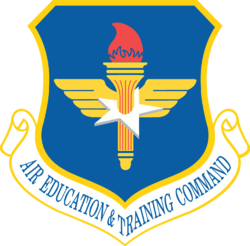

.jpg)
.svg.png)